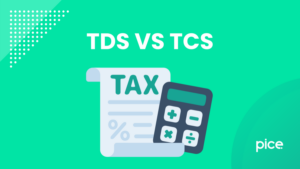GST Collection in India: All about GST revenue so far
- 13 Nov 25
- 6 mins

GST Collection in India: All about GST revenue so far
Key Takeaways
- India recorded its highest-ever GST collection of ₹2.37 lakh crore in April 2025.
- A 9.4% annual rise in GST revenue shows strong economic and tax compliance growth.
- E-invoicing and AI tools have improved GST transparency and reduced tax evasion.
- Manufacturing, e-commerce, and logistics sectors drive India’s GST performance.
- Consistent GST growth signals healthy consumption and expanding formal markets.
Did you know that India collected ₹2.37 lakh crore in GST revenue in April 2025 alone? What does this rising figure say about the country’s economic health and tax compliance? The GST collection in India has become a key metric for assessing business activity, consumer demand and policy effectiveness.
This article will provide you with information regarding the recent trends in GST revenue collection. The article will also explore what drives these collections and understand their broader impact on India’s economy.
What is GST Collection in India?
The Goods and Services Tax in India was introduced in 2017. GST is primarily of 3 types: Central GST, State GST and Integrated GST. The central and state governments collect this indirect tax on any goods and services. The GST Council is responsible for making recommendations regarding GST changes in India.
The table below presents the GST collection in India since its introduction in 2017:
| Year | Revenue Collection from GST (Rs. In Crores) |
| FY 2017-18 | 7.19 |
| FY 2018-19 | 11.77 |
| FY 2019-20 | 12.22 |
| FY 2020-21 | 11.36 |
| FY 2021-22 | 14.76 |
| FY 2022-23 | 18.10 |
| FY 2023-24 | 20.18 |
Contribution of Different Business Types to GST Revenue
There are several kinds of businesses in India, and they specifically contribute a percentage to GST collection in India by making tax payments under the GST network. Current statistics show that the collection of GST revenue from different types of businesses is as follows:
| Type of Business | GST Collection in Percentage |
| Public Ltd. Company | 34.83% |
| Private Ltd. Company | 27.94% |
| Proprietorship | 13.28% |
| Public Sector Undertaking | 9.64% |
| Partnership | 7.29% |
| Club/ Society/ AOP/ Trust | 1.38% |
| Limited Liability Partnership | 1.18% |
| Government Department | 0.99% |
| Statutory Body | 0.38% |
| Foreign Company | 0.38% |
| Hindu Undivided Family | 0.25% |
| Local Authority | 0.21% |
| Unlimited Company | 0.01% |
| Foreign Limited Liability Partnership | 0.00% |
| Any other body notified by the committee | 0.00% |
| Others | 2.24% |
| Net GST revenue | 100% |
Collection of GST Revenue in 2024
The Indian government collected a record ₹2.37 lakh crore in one month of April 2025. This was the highest ever collected GST revenue in one month since its introduction.
In the fiscal year 2024-2025, the total GST revenue was around ₹22.08 lakh crore, which was an increase from the last financial year of 2023-2024. The markup of 9.4% shows how the GST regime has increased the tax revenue collection of India.
Monthly Trends of GST Collection in India 2024-2025
The table below presents the monthly trend of GST collection in India along with its corresponding primary observation:
| Months | Monthly Revenue (₹ Crore) | YoY Growth (%) | Primary Observation |
| June 2025 | ₹1,85,000 crore | ~6.2% | Imports witnessed notable growth, with refund claims rising sharply and local consumption remaining firm |
| May 2025 | ₹2,01,050 crore | ~16.4% | Monthly GST inflows crossed ₹2 lakh crore regularly, supported by strong import duties and consistent domestic transactions |
| April 2025 | ₹2,36,716 crore | ~12.6% | Healthy consumer demand, active inter-state commerce and quicker refund processes are observed |
| March 2025 | ₹1,96,000+ crore | ~9.9% | Reforms in GST management and a broader taxpayer base |
| February 2025 | ₹1,83,000+ crore | ~10.2% | GST adaptability and compliance |
| January 2025 | ₹1,95,506 crore | ~12% | Stricter enforcement of tax regulations as compared to FY 2024 |
| December 2024 | ₹1,76,857 crore | ~8% | Filing surges at the fiscal year-end, along with heightened trade activity |
| November 2024 | ₹1,82,269 crore | ~10% | Sales during festival time boosted GST collection |
| October 2024 | ₹1,87,346 crore | ~9% | Sales during festival time boosted GST collection |
| September 2024 | ₹1,73,240 crore | ~6% | Stable revenue from service sectors and outbound trade |
| August 2024 | ₹1,75,000 crore | ~7% | Upward revenue movement in the manufacturing domain |
| July 2024 | ₹1,59,000 crore | ~5% | Impact of Budget 2024 |
| June 2024 | ₹1,74,000 crore | ~6% | Increase in ITC claims and tax compliance |
| May 2024 | ₹1,72,739 crore | ~4% | Slowdowns due to seasonal factors led to fewer transactions |
| April 2024 | ₹2,10,267 crore | ~12% | Highest-ever GST collection |
| March 2024 | ₹1,78,484 crore | ~9% | Increased transactions due to ending fiscal year |
| February 2024 | ₹1,68,337 crore | ~6% | Stable collections |
| January 2024 | ₹1,72,129 crore | ~6% | Steady revenue in comparison with last month |
Factors Affecting GST Collection
The 4 major factors that impact GST collection in India are as follows:
1. Economic Growth
India’s GDP growth in the first quarter of 2025 has led to higher tax collection. This growth in GDP is the result of higher consumer demand and activity in the formal sector.
2. Evasion Control and Tax Compliance
The mandate for e-invoicing for businesses with a turnover of more than ₹5 crore, effective from January 2025, has led to the prevention of tax evasion. This has also led to a reduction in fake invoice reporting.
3. Rate and Policy Changes
The changes in GST slab rates have led to higher tax collection. This anticipated change may already be driving better compliance among businesses.
4. Industry Performance
The activity in several sectors is driving higher collection. These sectors include manufacturing (auto, cement, steel), logistics and warehousing, and digital services and e-commerce.
Government Measures to Boost GST Collection
The Indian government has also taken certain measures that have boosted the collection of GST. These measures are as follows:
- E-invoicing mandate
- GST return flagging with the use of Artificial Intelligence
- GST enforcement dashboards for the state-level
Conclusion
The government tracks the GST collection in India each month to assess economic momentum in the country. Keeping a record of this also improves tax planning. By analysing these collections, government tax authorities are able to identify compliance trends.
They are also able to evaluate policy outcomes and make informed policy decisions. As the Indian economy grows and digital tax systems evolve, GST collection will continue to play a vital role in strengthening India’s revenue framework.
💡If you want to streamline your payment and make GST payments via credit, debit card or UPI, consider using the PICE App. Explore the PICE App today and take your business to new heights.
 By
By 

















